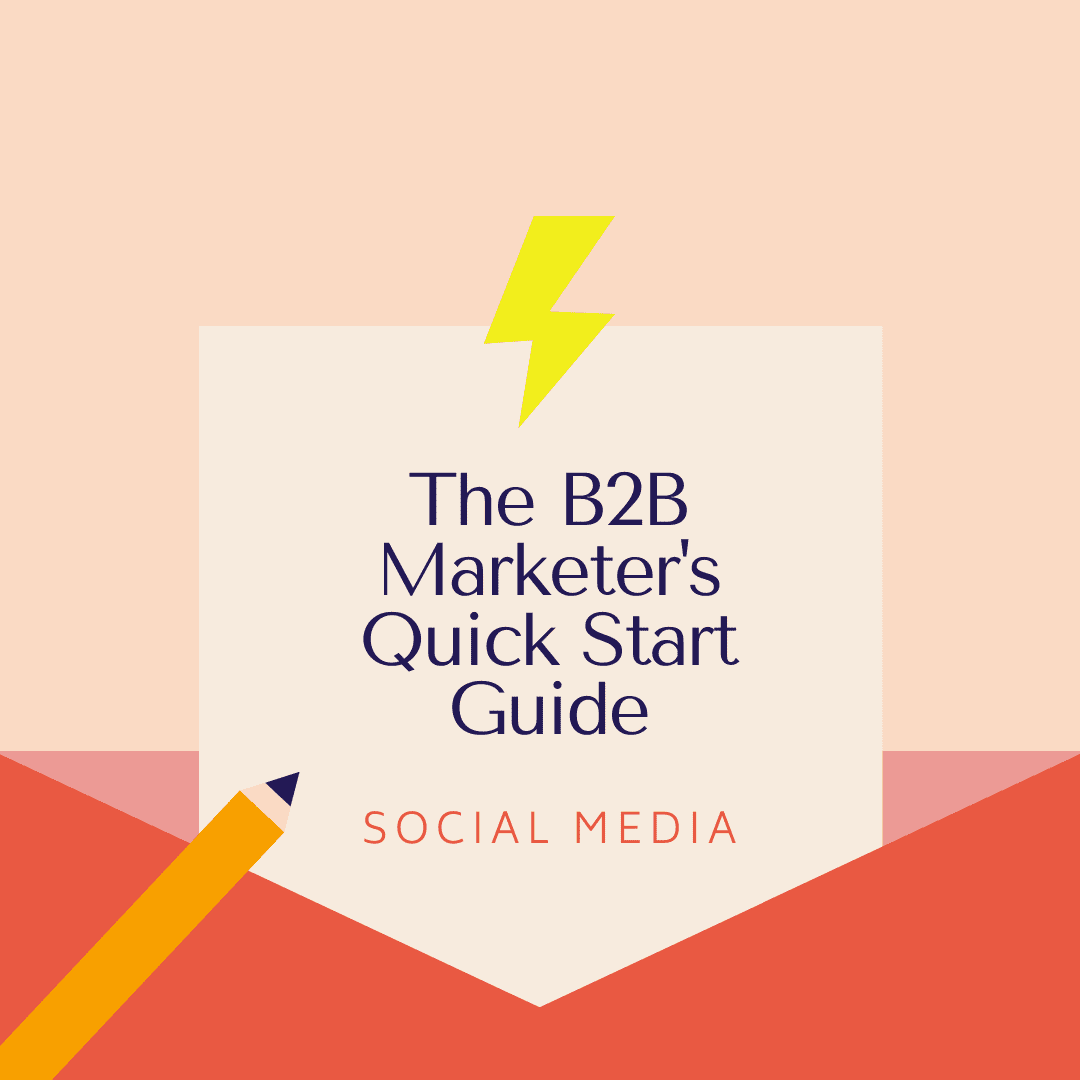The B2B Marketer’s Quick Start Guide: Social Media

By Brenna Lofquist, Senior Marketing Consultant at Heinz Marketing
In today’s digital technology landscape there are numerous platforms, tools and technologies at the disposal of every marketer—almost too many. My goal with the Quick Start Guide series is to provide you a quick synopsis of a martech solution category. For each category I’ll highlight a few platforms/tools, the pros and cons of each, benchmarks and additional resources. Without further ado…
Welcome to the first installment of The B2B Marketer’s Quick Start Guide. Today’s post is all things Social Media.
When I say social media, I mean by definition, websites or applications that enable users to create and share content or participate in social networking. Social media platforms that allow you to share content can promote free or paid, in this case we’re going to focus on the free aspect.
Social media can be used for a variety of things, including:
- Expressing yourself
- Promoting a business or company
- Discussing interests
- Networking / connecting
Types of Social Media
There are a handful of types of social media, which differ depending on who you ask, however, I like how Hubspot breaks it down. Also, this is by no means an exhaustive list, just the major players and some of these platforms work for more than one type of social media.
- Social Networking
- Photo Sharing
- Video Sharing
- YouTube
- Vimeo
I purposefully included only the first three categories as that’s where I’d like the focus to be for this post. Interactive Media is definitely becoming more popular with the focus being more on individual users and maybe B2C. Blogging/Community Building is also important in B2B marketing however, most companies have a blog on their website and can instead use blogging platform as a means for content syndication, more on that later.
The Breakdown
Social Networking
Most likely the most traditional and/or popular form of social media, social networking allows users to interact in a variety of ways. For businesses, social networking platforms are a great way to start developing a social strategy, and a free one at that.
Businesses can build free profiles on these social network sites. They can provide additional information about their services, link to their website, and interact with customers and potential prospects. Companies can start to build a following where they can then post and share content relevant to their audience to drive awareness and demand.
|
Pros |
Cons |
|
|
In summary, social networking tools are a great resource for B2B companies. Social networking helps companies grow their following, connect with their audiences, and promote content. All of which in turn helps drive demand for the business, which is the ultimate goal, right?
One thing to keep in mind as you’re thinking about social networking channels. Different channels have different audiences, make sure you do your research to figure out which are best for your business.
Photo Sharing
Photo sharing platforms provide a visual feed of photos and short videos users can interact and engage with through likes, tags, comments, direct messages, shares, and more. Photo sharing is especially important for businesses promoting a physical product, where they can use images and short videos to engage their audience. For B2B marketers, photo sharing is more often used for brand awareness and to showcase company culture and updates.
|
Pros |
Cons |
|
|
|
|
|
|
Instagram and Pinterest, while both photo sharing platforms, do have key differences. As I mentioned in the section above, make sure to do your research and see if these platforms are the best fit for your business.
Video Sharing
Video sharing platforms allow you to host videos you’ve created where they can be easily accessed. You can also link to videos or share them on other platforms. Video can be helpful to a wide range of industries and is becoming more popular. According to HubSpot, roughly 88% of marketers say video gives them a strong ROI and 90% feel the level of video competition has increased.
We partnered with Vidyard to conduct a survey in 2019 and even then, we found video investment was up and 94% of companies said video is valuable in their daily marketing mix. We’ve seen video continue to grow so if you don’t have it in your marketing mix, it’s time to check it out!
|
Pros |
Cons |
|
| YouTube |
|
|
| Vimeo |
|
|
It’s likely YouTube is a great starting point for B2B marketers. You can easily host videos for free and use them throughout other social media channels and promotions. Vimeo seems to cater to a more niche audience but could also be a great platform for companies who produce more videos.
There are numerous paid video platforms that incorporate other elements, making it easier to target folks with video and incorporate video into other strategies but, we’ll save that for another post.
Coming up
Be on the lookout for next months B2B Marketer’s Quick Start Guide. April’s post will focus on Content Experience platforms.
Are there any martech solution categories you’re interested in? Let me know and I’ll add it to the list.






